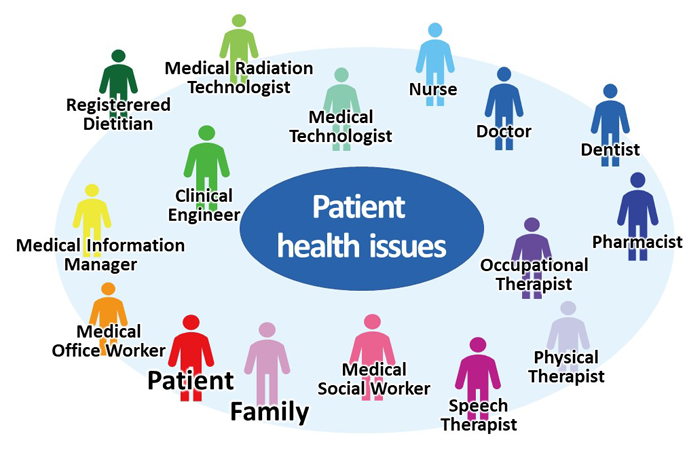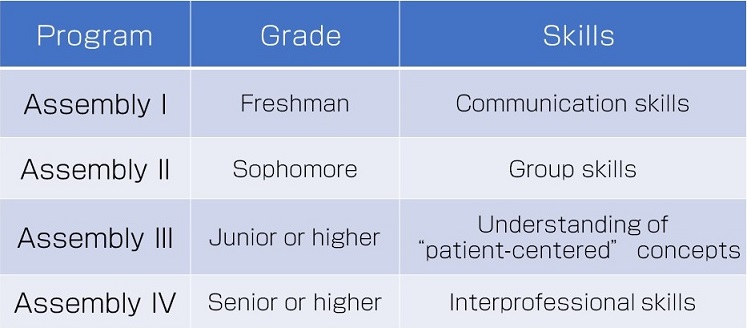The purpose and goal of “The Assembly Education” program
“The Assembly Education” program is based on interprofessional education (IPE). Professionals from different fields or professions work together on the health issues of patients.
Since Fujita Health University (FHU) was founded, we have recognized the importance of interprofessional collaboration by offering The Assembly Education program. Reflecting our founding philosophy “Our creativity for the people,” students and academic staff from different schools and departments work collaboratively.
The Assembly Education program is progressive, starting from Assembly I at the freshmen level, through to Assembly IV in the last grade. The skills that students acquire in the program are as follows:
Since Fujita Health University (FHU) was founded, we have recognized the importance of interprofessional collaboration by offering The Assembly Education program. Reflecting our founding philosophy “Our creativity for the people,” students and academic staff from different schools and departments work collaboratively.
The Assembly Education program is progressive, starting from Assembly I at the freshmen level, through to Assembly IV in the last grade. The skills that students acquire in the program are as follows:
In Assembly I, students develop communication skills through classroom-based work in small groups.
In Assembly II, the aim is to acquire group skills. The activities include hospital and community visits.
In Assembly III, students develop understanding of “patient-centered” concepts through participation in the world's largest team-based learning (TBL) event, consisting of more than 900 students.
In Assembly IV, students participate in interprofessional teams at the university hospital in order to learn interprofessional collaboration on-site. Prior to that, students study the role of their own and other professions through their selected courses (such as clinical training and practical training).
In combining The Assembly Education program with each department’s education, students can become “Good health professionals” through the practice of interprofessional collaboration.
In Assembly II, the aim is to acquire group skills. The activities include hospital and community visits.
In Assembly III, students develop understanding of “patient-centered” concepts through participation in the world's largest team-based learning (TBL) event, consisting of more than 900 students.
In Assembly IV, students participate in interprofessional teams at the university hospital in order to learn interprofessional collaboration on-site. Prior to that, students study the role of their own and other professions through their selected courses (such as clinical training and practical training).
In combining The Assembly Education program with each department’s education, students can become “Good health professionals” through the practice of interprofessional collaboration.
Contents on page
Assembly I
What is acquired: Communication skills
[From the 2020 academic year]
All freshman students learn about communication that forms the basis of interprofessional collaboration. Teams comprising six students from different schools and departments take part in experiential learning exercises to “be interested in others,” “listen attentively” and to “question.” The focus is on the review of learning in order to apply what is learnt to the next phase.
This will be a completely different innovative program from the one provided until 2019.
[From the 2020 academic year]
All freshman students learn about communication that forms the basis of interprofessional collaboration. Teams comprising six students from different schools and departments take part in experiential learning exercises to “be interested in others,” “listen attentively” and to “question.” The focus is on the review of learning in order to apply what is learnt to the next phase.
This will be a completely different innovative program from the one provided until 2019.
[2019 Academic year]
Freshman students learn the fundamental spirit of interprofessional collaboration through the practice of effective communication with others and positive participation in group and university-wide activities. In order to enhance the learning process, students participate in interdisciplinary teams comprising students studying to become different health professionals, and work together with academic staff of various backgrounds in terms of experience.
As for the group activities, students choose a group that they wish to belong to according to their interests, from a range of fields such as sports, culture, and research. Students participate in the group activities for one year. There were 38 groups in the 2019 academic year.
As for the university-wide activities, students acquire the knowledge and mindset that are necessary as health professionals through lectures and workshops. All students attend workshops on topics including emergency and lifesaving, communication, and disaster medical care (psychological first aid (PFA) and patient transportation).
Freshman students learn the fundamental spirit of interprofessional collaboration through the practice of effective communication with others and positive participation in group and university-wide activities. In order to enhance the learning process, students participate in interdisciplinary teams comprising students studying to become different health professionals, and work together with academic staff of various backgrounds in terms of experience.
As for the group activities, students choose a group that they wish to belong to according to their interests, from a range of fields such as sports, culture, and research. Students participate in the group activities for one year. There were 38 groups in the 2019 academic year.
As for the university-wide activities, students acquire the knowledge and mindset that are necessary as health professionals through lectures and workshops. All students attend workshops on topics including emergency and lifesaving, communication, and disaster medical care (psychological first aid (PFA) and patient transportation).
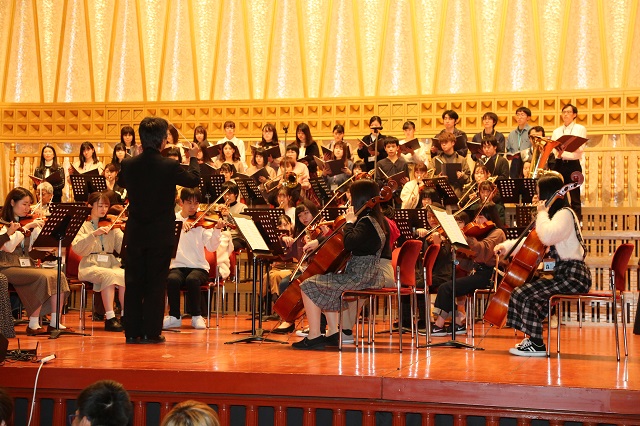
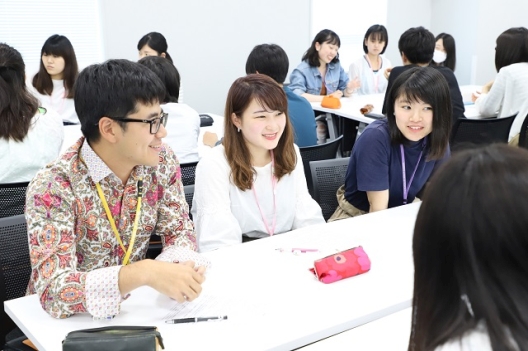
What is acquired: Group Skills
All sophomore students acquire group skills through project-based learning. Six students from different departments form a team and participate in various activities and local events on and off campus or at the university hospital. Students must take the initiative in deciding on a project and then carrying it out. There are various possible projects including collaboration with the local community and the nurturing of a research mindset.
All sophomore students acquire group skills through project-based learning. Six students from different departments form a team and participate in various activities and local events on and off campus or at the university hospital. Students must take the initiative in deciding on a project and then carrying it out. There are various possible projects including collaboration with the local community and the nurturing of a research mindset.
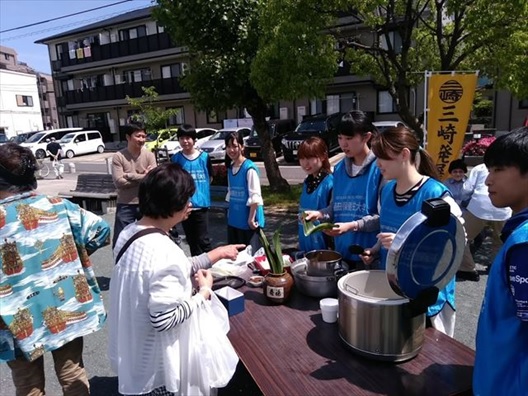
What is acquired: Understanding of “patient-centered” concepts
All junior students (and the senior students of some departments) learn “patient-centered” concepts that are the basis of interprofessional collaboration. Team-based learning (TBL) is applied. Students studying health and welfare at the nearby Nihon Fukushi, Meijo and Aichi Gakuin Universities are also invited to participate. They learn “patient-centered” concepts together in teams comprising students from different universities, schools and departments. With over 900 students, this unique large-scale TBL event could well be one of the largest such events in the world.
The theme from the 2019 academic year event was “How to approach a patient’s wishes while considering how they wish to live,” while the main overarching theme was “Quality of Life (QOL).”
All junior students (and the senior students of some departments) learn “patient-centered” concepts that are the basis of interprofessional collaboration. Team-based learning (TBL) is applied. Students studying health and welfare at the nearby Nihon Fukushi, Meijo and Aichi Gakuin Universities are also invited to participate. They learn “patient-centered” concepts together in teams comprising students from different universities, schools and departments. With over 900 students, this unique large-scale TBL event could well be one of the largest such events in the world.
The theme from the 2019 academic year event was “How to approach a patient’s wishes while considering how they wish to live,” while the main overarching theme was “Quality of Life (QOL).”
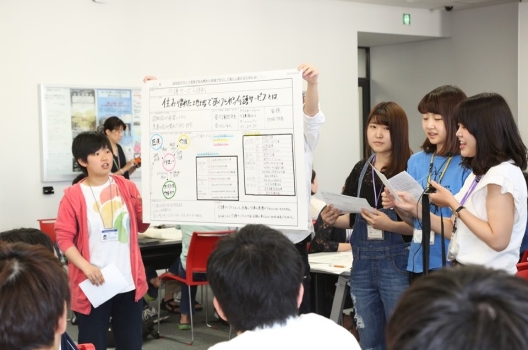
Assembly IV
What is acquired: Interprofessional skills
Senior students (and fifth-year students of the School of Medicine) learn about interprofessional collaboration. Prior to that, students study the roles of their own, as well as other professions through their selected courses (such as clinical training and practical training).
In the 2019 academic year, students were placed within interprofessional teams in practice at our university hospital such as the dementia care team, palliative care team, infection control team (ICT), dysphagia team, nutritional support team (NST), bedsore prevention team, bladder-control assistance team and antimicrobial stewardship team. Following the practical placement, for the purpose of reinforcement, students review their learning within the classroom environment.
We will conduct a trial on a sample of 5% of all our students in the 2019 academic year and 20% in the 2020 academic year.
Senior students (and fifth-year students of the School of Medicine) learn about interprofessional collaboration. Prior to that, students study the roles of their own, as well as other professions through their selected courses (such as clinical training and practical training).
In the 2019 academic year, students were placed within interprofessional teams in practice at our university hospital such as the dementia care team, palliative care team, infection control team (ICT), dysphagia team, nutritional support team (NST), bedsore prevention team, bladder-control assistance team and antimicrobial stewardship team. Following the practical placement, for the purpose of reinforcement, students review their learning within the classroom environment.
We will conduct a trial on a sample of 5% of all our students in the 2019 academic year and 20% in the 2020 academic year.


